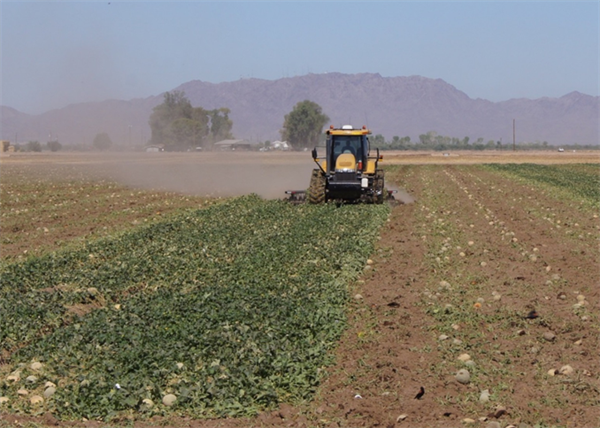-
Jun 14, 2023Sanitation and Summer Whitefly Management (2023)
The fall melon season appears to be about halfway completed and whitefly abundance is finally starting to build up. Obviously, this has implications immediately for cotton, and eventually for fall melon and produce crops. With spring melon harvest coming to an end in a few weeks, now is a good time to begin thinking about whitefly management in your next crop. The first line of defense in avoiding whitefly issues in fall plantings is effectively controlling whiteflies on cotton this summer. Fortunately, PCAs have several effective insecticides for whitefly management in cotton products (e.g., Knack, Courier, Assail, PQZ, Sefina). However, it is important that whitefly populations be prevented from building up to large numbers in the spring melons that recently finished or are nearing completion of harvest. With whitefly movement beginning to rapidly increase, we anticipate population growth will increase significantly over the next 2 weeks with the forecasted high temperatures and area-wide melon harvests. Growers and PCAs should not hesitate to knock these populations down on pre-harvest melons. Under current weather conditions (hot and dry), immature populations can rapidly build-up and cause honeydew/sooty cold contamination on fruit. Furthermore, the longer a harvested melon field remains untouched, the more whiteflies that can potentially be produced. Once harvest is complete, proper sanitationin spring melons is critical for preventing unnecessary whitefly dispersal into cotton. It is highly recommended that melon growers quickly destroy plant residue as soon as possible following harvest. A delay in disking under melon fields following harvest can provide a large source of adult whiteflies that will readily move into nearby cotton. These fields also potentially extend the host-acquisition period for CYSDV. A quick survey last week showed that overall CYSDV incidence is very light in spring melons, but several fields had spotty patches of virus on field edges. The longer the fields remain after harvest, the more virus that can potentially spread. Once melons have been disked and flat-watered, it is common for volunteer melons to germinate and emerge during July and August. The rapid destruction of these volunteer melons between spring and fall crops can reduce the source of whiteflies and virus inoculum available. This can be done by disking or applying a contact, burn-down herbicide to fields. Volunteer melons should be destroyed as soon as practical. Our research has indicated that fall melons planted within 2 miles of last spring’s melons and/or volunteers are at a high risk of CYSDV infection. Ideally, it is in the Ag communities best interest to use sound cultural management practices, such as sanitation, to eliminate and avoid unnecessary sources of whiteflies before the fall produce and melon seasons begin. For more information on cultural management practices for whiteflies click on this link: Cultural Practices Key to Whitefly Management and Virus in Fall Melons.
 To contact John Palumbo go to: jpalumbo@ag.Arizona.edu
To contact John Palumbo go to: jpalumbo@ag.Arizona.edu














